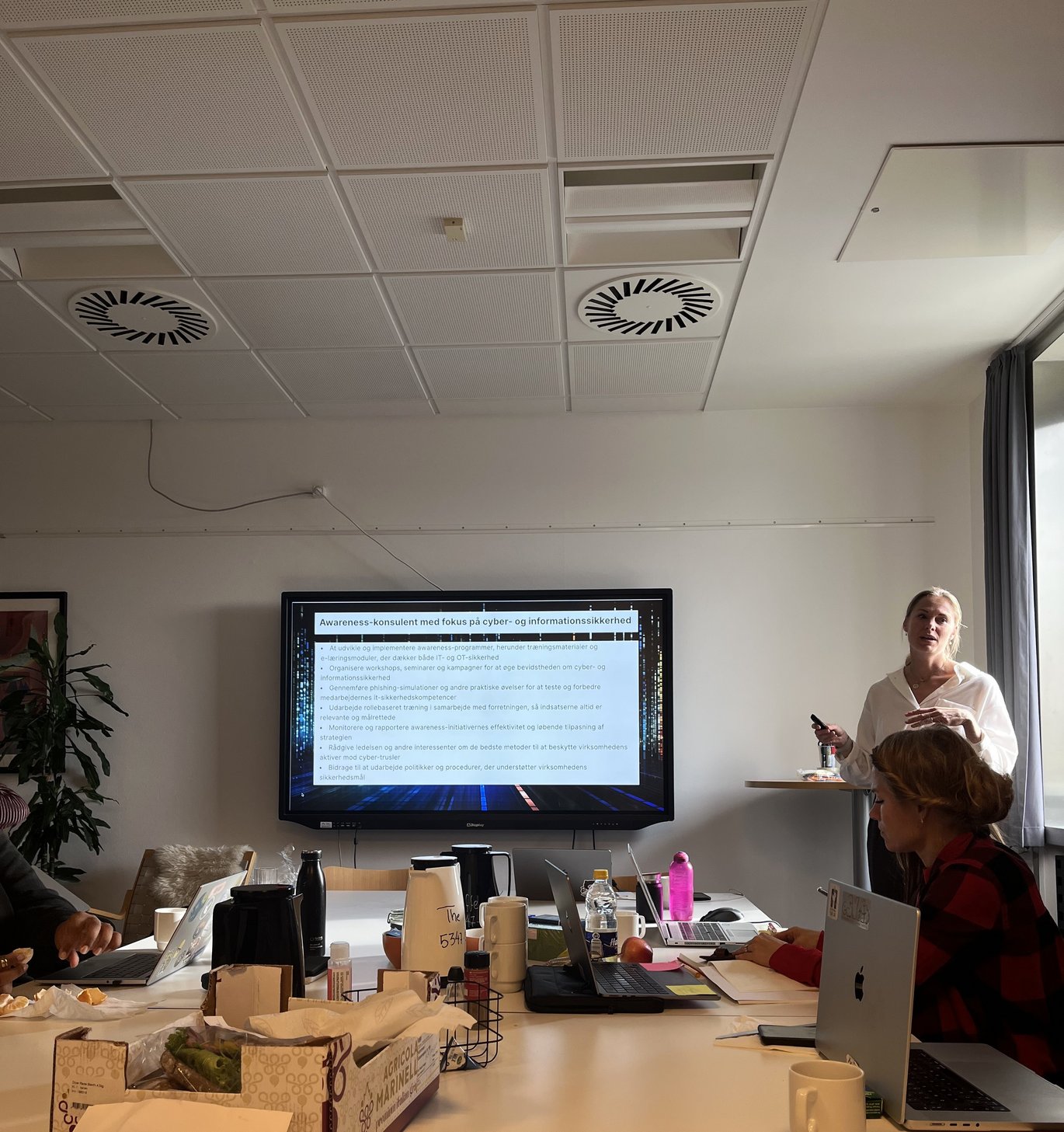Workshops: Cybersecurity in the curriculum
In collaboration with the Faculty of Arts and consultancy Happy42, SHAPE held workshops for instructors from BSS and Arts, focusing on cybersecurity. Key points included presentations from industry professionals and discussions on how to integrate cybersecurity into teaching.

At a time when Denmark ranks as one of Europe’s most digitalized nations, challenges in cybersecurity are becoming increasingly complex and extensive. The focus is now on equipping future graduates to handle the threats and demands of our ever-more digital society.
SHAPE, in collaboration with the Faculty of Arts and Happy42, has initiated workshops for instructors from both BSS and Arts to address this challenge.
The workshops were kicked off by Linda Pedersen, a partner at Happy42, who presented an introduction to cybersecurity and shared insights from a previous fast-track course on cybersecurity at a generalist level. This course has proven highly successful, both among participants and companies that increasingly seek employees with these skills.
The business sector’s need for generalists
Industry was well-represented in the workshops, with presentations from Bjarke Petersen from Cyberminds and Maja Øvlisen from Norlys, emphasizing the urgent need for students with cybersecurity skills.
Bjarke highlighted the vital role of humanities graduates, as their insights into social issues, organizational understanding, and communication are invaluable in cybersecurity. It’s not just about technology—it’s about people, culture, and the ability to prepare and communicate effectively during a security crisis.
Maja shared her own path into cybersecurity, where she leveraged her background in social sciences and psychology, as well as her thesis on trust in data handling within cybersecurity in a medical practice, to carve her way into the industry. For her, cybersecurity is very much about bridging IT and management—acting as a translator between technical and business needs.
How can cybersecurity be integrated into the curriculum?
The workshop participants engaged in in-depth discussions on how to incorporate cybersecurity into teaching. Although there was strong motivation and consensus on the need, it became clear that the next step will be to determine how this can be practically implemented in the curriculum.
There are still many questions that need answers: How can cybersecurity become a natural part of teaching? How can we ensure that future graduates are equipped to work with cybersecurity?
The next step will be to discuss how these questions can be answered and translated into concrete initiatives.
Thank you to everyone who participated in the workshops!
For more information on how cybersecurity can be integrated into education, please contact SHAPE's scientific assistant, Karina Dollerup.
